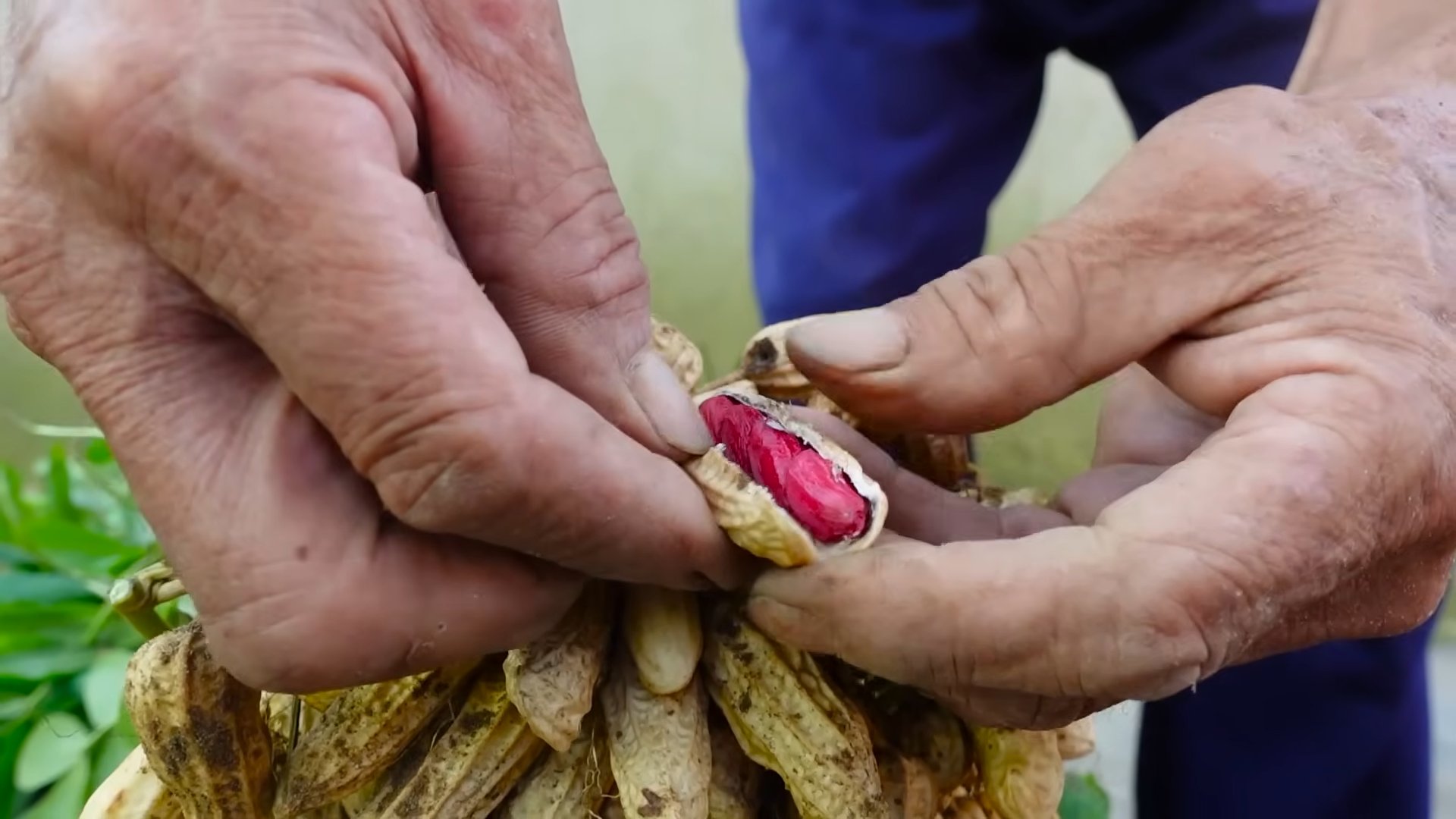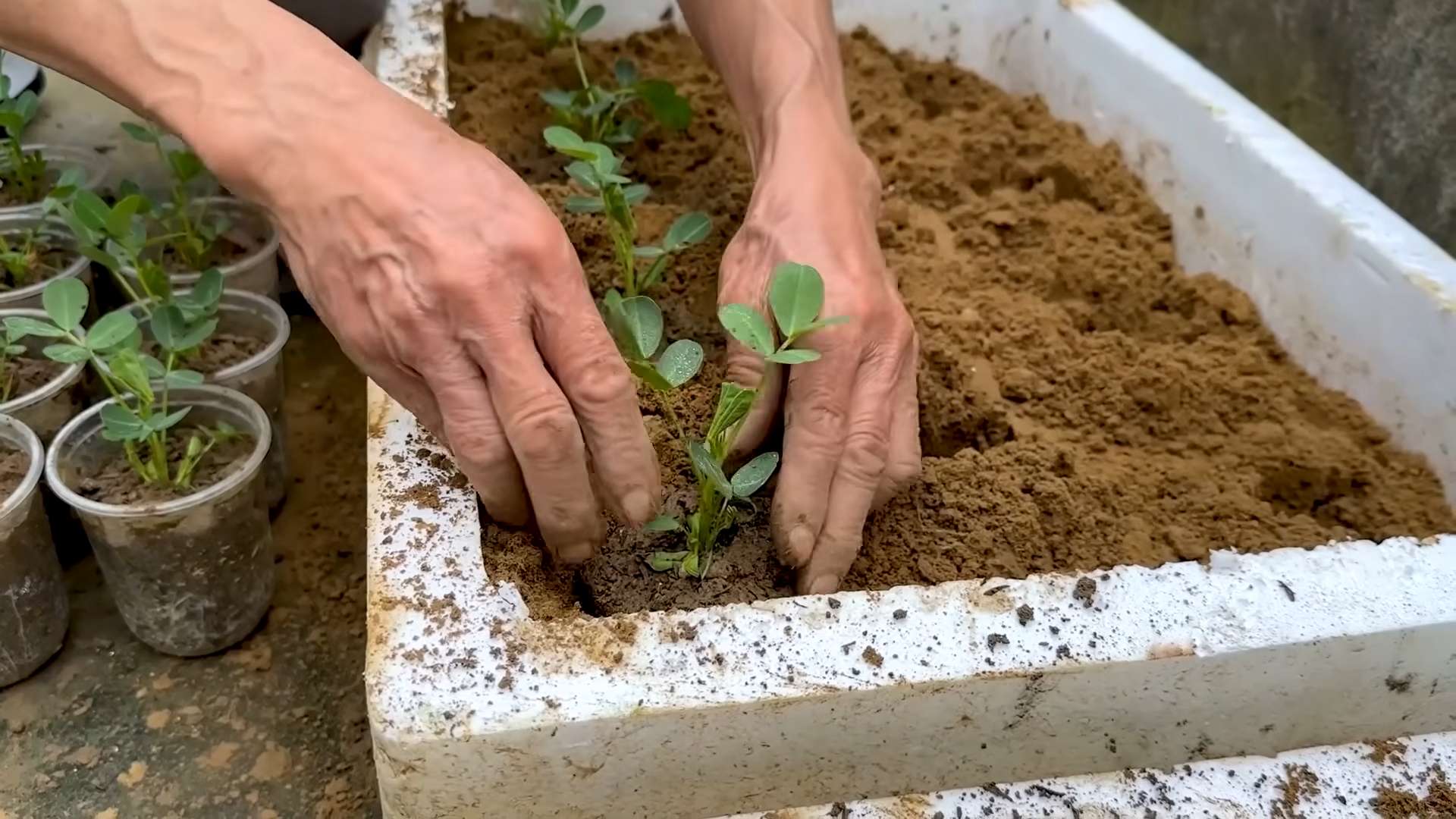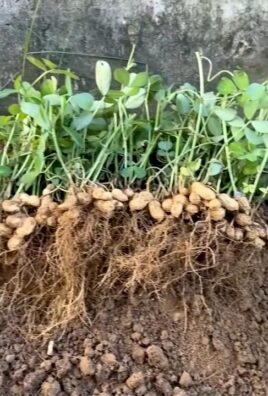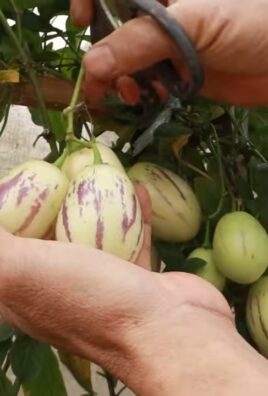Growing Zucchini Year Round might seem like a gardener’s pipe dream, especially if you live in a region with harsh winters. But guess what? It’s totally achievable with a little know-how and some clever DIY tricks! For centuries, gardeners have sought ways to extend their growing seasons, from ancient Roman greenhouses to the ingenious cold frames of Victorian England. The desire to enjoy fresh, homegrown produce throughout the year is deeply rooted in our history and continues to drive innovation in the gardening world.
Imagine biting into a juicy, homegrown zucchini in the middle of January. No more bland, store-bought veggies! This article is your ultimate guide to mastering the art of growing zucchini year round, even when the snow is falling. We’ll explore simple, budget-friendly DIY hacks that will transform your gardening game. From creating mini-greenhouses to selecting the right zucchini varieties, I’ll share all the secrets to keep your zucchini plants thriving, no matter the season. So, ditch the winter blues and get ready to harvest fresh zucchini all year long!

Growing Zucchini Year-Round: My DIY Greenhouse Hack
Okay, zucchini lovers, let’s talk about a dream come true: fresh zucchini, no matter the season! I’m going to walk you through my DIY greenhouse hack that allows me to grow zucchini year-round, even when Jack Frost is nipping at everyone else’s gardens. It’s not as daunting as it sounds, I promise! We’ll break it down into manageable steps, and before you know it, you’ll be harvesting zucchini in December.
Choosing the Right Zucchini Variety
First things first, let’s talk zucchini varieties. While any zucchini *can* technically be grown in a greenhouse, some are better suited for container gardening and indoor environments. I’ve had great success with these:
* ‘Black Beauty’: A classic, reliable variety that produces dark green, glossy fruits. It’s relatively compact and handles container life well.
* ‘Early Crookneck’: If you’re looking for something a little different, this yellow zucchini is a fast grower and produces delicious, slightly curved fruits.
* ‘Spacemiser’: As the name suggests, this is a bush-type zucchini that’s perfect for smaller greenhouses or limited space.
* ‘Gold Rush’: Another yellow variety, ‘Gold Rush’ is known for its disease resistance and high yields.
Building Your Mini Greenhouse (or Adapting an Existing One)
Now, for the fun part! You have a couple of options here: building a small, dedicated greenhouse or adapting an existing one. I’ll cover both.
Option 1: DIY Mini Greenhouse
This is the route I initially took, and it’s surprisingly simple.
Materials You’ll Need:
* PVC pipes (1/2 inch or 3/4 inch): The amount will depend on the size of your greenhouse. I used about 20 feet for a 4ft x 4ft structure.
* PVC connectors (T-joints and elbow joints): To connect the pipes and create the frame.
* Clear plastic sheeting (6 mil or thicker): This will be your greenhouse covering. You can also use greenhouse film.
* Clamps or clips: To secure the plastic sheeting to the PVC frame.
* Zip ties: For extra security and reinforcement.
* Measuring tape: Essential for accurate cuts.
* PVC pipe cutter or saw: To cut the PVC pipes to the desired lengths.
* Door hinges and latch (optional): If you want a proper door.
* Wooden base (optional): To elevate the greenhouse and provide a more stable foundation.
Step-by-Step Instructions:
1. Plan Your Dimensions: Decide on the size of your greenhouse. I recommend starting small, especially if you’re new to this. A 4ft x 4ft or 4ft x 6ft greenhouse is a good starting point. Sketch out your design on paper, noting the lengths of the PVC pipes you’ll need.
2. Cut the PVC Pipes: Using your measurements, cut the PVC pipes to the correct lengths. Remember to account for the connectors when calculating the pipe lengths.
3. Assemble the Frame: Connect the PVC pipes using the T-joints and elbow joints to create the frame of your greenhouse. Start with the base, then build up the sides and roof. Make sure everything is sturdy and secure.
4. Attach the Plastic Sheeting: Drape the plastic sheeting over the frame, ensuring it covers the entire structure. Use clamps or clips to secure the plastic to the PVC pipes. Pull the plastic taut to minimize wrinkles and prevent it from flapping in the wind.
5. Create a Door (Optional): If you want a door, cut an opening in the plastic sheeting and attach hinges to one side. Create a simple latch to keep the door closed.
6. Reinforce the Structure: Use zip ties to reinforce any weak points in the frame or where the plastic sheeting is attached.
7. Add Ventilation: Ventilation is crucial to prevent overheating and humidity buildup. Create small vents by cutting flaps in the plastic sheeting and securing them with clips or Velcro. You can also install a small fan inside the greenhouse to circulate air.
Option 2: Adapting an Existing Greenhouse
If you already have a greenhouse, even a small one, you’re halfway there! The key is to ensure it’s properly insulated and heated.
Things to Consider:
* Insulation: Check for any gaps or cracks in the greenhouse structure and seal them with caulk or weather stripping. You can also add an extra layer of plastic sheeting or bubble wrap to the inside of the greenhouse for added insulation.
* Heating: Depending on your climate, you may need to add a supplemental heat source. A small electric space heater with a thermostat is a good option. Make sure it’s rated for greenhouse use and has safety features like automatic shut-off.
* Lighting: Zucchini needs plenty of light, especially during the winter months. Supplement natural light with grow lights if necessary.
Preparing Your Zucchini Planting Containers
Zucchini thrives in large containers, so don’t skimp on size!
What You’ll Need:
* Large containers (at least 15 gallons): I prefer using plastic containers with drainage holes.
* High-quality potting mix: A well-draining mix is essential. I like to use a blend of compost, peat moss, and perlite.
* Slow-release fertilizer: To provide nutrients throughout the growing season.
* Watering can or hose: For watering your zucchini plants.
Step-by-Step Instructions:
1. Choose Your Containers: Select containers that are at least 15 gallons in size. Make sure they have drainage holes to prevent waterlogging.
2. Fill the Containers: Fill the containers with high-quality potting mix, leaving a few inches of space at the top.
3. Add Fertilizer: Mix in a slow-release fertilizer according to the package instructions.
4. Water the Soil: Water the soil thoroughly to moisten it before planting.
Planting Your Zucchini Seeds or Seedlings
Now for the exciting part – planting!
Step-by-Step Instructions:
1. Start Seeds Indoors (Optional): To get a head start, you can start zucchini seeds indoors 4-6 weeks before you plan to transplant them into the greenhouse. Sow the seeds in small pots or seed trays filled with potting mix. Keep the soil moist and warm, and provide plenty of light.
2. Direct Sow Seeds (Alternative): You can also direct sow zucchini seeds directly into the containers in the greenhouse. Plant the seeds about 1 inch deep and water them thoroughly.
3. Transplant Seedlings (If Starting Indoors): Once the seedlings have developed a few true leaves, carefully transplant them into the containers in the greenhouse. Dig a hole in the soil that’s large enough to accommodate the root ball, and gently place the seedling in the hole. Backfill with soil and water thoroughly.
4. Space Plants Appropriately: If you’re planting multiple zucchini plants in the same greenhouse, make sure to space them adequately to allow for proper air circulation and sunlight penetration. I recommend spacing them at least 2-3 feet apart.
Caring for Your Zucchini Plants in the Greenhouse
Consistent care is key to a successful year-round zucchini harvest.
Key Care Tips:
* Watering: Water your zucchini plants regularly, especially during hot weather. Check the soil moisture by sticking your finger into the soil. If the top inch feels dry, it’s time to water. Avoid overwatering, as this can lead to root rot.
* Fertilizing: Zucchini plants are heavy feeders, so fertilize them regularly with a balanced fertilizer. I like to use a liquid fertilizer every 2-3 weeks.
* Pollination: Zucchini plants need to be pollinated to produce fruit. In a greenhouse, you may need to hand-pollinate the flowers. Use a small paintbrush to transfer pollen from the male flowers to the female flowers. The female flowers have a small zucchini fruit at the base.
* Pruning: Prune your zucchini plants to improve air circulation and sunlight penetration. Remove any yellowing or dead leaves.
* Pest and Disease Control: Keep an eye out for pests and diseases. Common zucchini pests include aphids, squash bugs, and squash vine borers. Common diseases include powdery mildew and blossom end rot. Treat any problems promptly with appropriate organic pesticides or fungicides.
* Temperature Control: Maintain a consistent temperature in the greenhouse. Zucchini plants thrive in temperatures between 65°F and 80°F. Use a heater to keep the greenhouse warm during cold weather and vents to cool it down during hot weather.
* Lighting: Ensure your zucchini plants receive adequate light. If natural light is insufficient, supplement with grow lights.
Harvesting Your Zucchini

Conclusion
So, there you have it! Extending your zucchini growing season doesn’t have to be a complex, expensive endeavor. With a few simple techniques and a little bit of planning, you can be enjoying fresh, homegrown zucchini well beyond the typical harvest window. This DIY approach, focusing on season extension through strategic planting, protective covers, and careful variety selection, offers a sustainable and rewarding way to maximize your garden’s bounty.
Why is this a must-try? Because who wants to say goodbye to delicious zucchini bread, grilled zucchini skewers, or stuffed zucchini blossoms just because the calendar says summer is ending? This method allows you to savor the flavor and nutritional benefits of this versatile vegetable for longer, reducing your reliance on store-bought produce and connecting you more deeply with the rhythms of your garden. Plus, it’s incredibly satisfying to outsmart Mother Nature, even in a small way!
Consider these variations to tailor the technique to your specific climate and gardening setup:
* For colder climates: Invest in heavier row covers or even a small greenhouse to provide more substantial protection against frost. You might also consider starting your late-season zucchini indoors to give them a head start.
* For warmer climates: Focus on providing shade during the hottest parts of the day to prevent bolting and stress. Choose heat-tolerant varieties and ensure adequate watering.
* For container gardeners: Use larger containers and pay close attention to soil moisture and nutrient levels. Move your containers to sheltered locations during extreme weather.
* Experiment with different varieties: While we’ve highlighted some reliable options, don’t be afraid to try other zucchini varieties known for their disease resistance and adaptability. You might discover a new favorite!
Ultimately, the key to successful zucchini growing season extension is observation and adaptation. Pay attention to your plants, monitor the weather, and adjust your strategies as needed. Don’t be discouraged if you encounter challenges along the way – gardening is a learning process, and every season brings new opportunities.
We wholeheartedly encourage you to try this DIY zucchini growing season extension trick. It’s a rewarding project that will not only provide you with a longer harvest but also deepen your understanding of gardening principles. We are confident that with a little effort, you can significantly extend your zucchini harvest and enjoy the fruits (or rather, vegetables) of your labor for months to come.
And now, we want to hear from you! Have you tried extending your zucchini growing season before? What techniques have worked best for you? Share your experiences, tips, and photos in the comments below. Let’s learn from each other and create a community of passionate zucchini growers! Your insights could be invaluable to other gardeners looking to maximize their harvest. Let’s make this the year of endless zucchini!
Frequently Asked Questions (FAQ)
What is the best time to start planting for a late-season zucchini harvest?
The ideal time to start planting for a late-season zucchini harvest depends on your local climate and the expected first frost date. As a general rule, aim to sow seeds or transplant seedlings about 8-10 weeks before the average first frost. This allows the plants enough time to mature and produce a substantial crop before the weather turns too cold. Consult your local agricultural extension office or online resources to determine the average first frost date for your area. Remember to factor in the days to maturity for the specific zucchini variety you are planting.
How do row covers actually help extend the zucchini growing season?
Row covers act as a protective barrier against frost, wind, and pests. They trap heat around the plants, creating a microclimate that is several degrees warmer than the surrounding air. This can be crucial in extending the growing season, especially during periods of light frost. Row covers also protect young seedlings from harsh weather conditions and insect damage, allowing them to establish themselves more quickly. Choose lightweight row covers that allow sunlight and water to penetrate, ensuring that your plants receive the necessary resources for growth.
What are some zucchini varieties that are particularly well-suited for late-season planting?
Several zucchini varieties are known for their disease resistance, cold tolerance, and ability to produce fruit even in less-than-ideal conditions. Some popular choices include ‘Black Beauty,’ ‘Costata Romanesco,’ ‘Spineless Beauty,’ and ‘Raven.’ These varieties tend to be more resilient and can withstand the challenges of a late-season harvest. Research different varieties and choose those that are best suited to your local climate and growing conditions. Consider disease resistance as a key factor, as late-season plantings may be more susceptible to fungal diseases due to cooler, wetter weather.
How often should I water my zucchini plants during the late season?
Watering frequency depends on several factors, including the weather, soil type, and plant size. As a general guideline, water deeply and less frequently, allowing the soil to dry out slightly between waterings. This encourages deep root growth and makes the plants more drought-tolerant. During the late season, monitor the soil moisture levels closely and adjust your watering schedule accordingly. Avoid overwatering, as this can lead to root rot and other fungal diseases. Water in the morning to allow the foliage to dry before nightfall, reducing the risk of disease.
What kind of fertilizer should I use for late-season zucchini plants?
Late-season zucchini plants benefit from a balanced fertilizer that provides essential nutrients for growth and fruit production. Choose a fertilizer with a higher phosphorus content to promote root development and flowering. You can also supplement with compost or other organic matter to improve soil fertility and drainage. Avoid over-fertilizing, as this can lead to excessive foliage growth at the expense of fruit production. Follow the instructions on the fertilizer label and apply it according to the recommended dosage. Consider using a slow-release fertilizer to provide a steady supply of nutrients over time.
How do I protect my zucchini plants from frost?
Protecting zucchini plants from frost is crucial for extending the growing season. Row covers are an effective way to provide insulation and trap heat around the plants. You can also use blankets, sheets, or burlap sacks to cover the plants during frosty nights. Make sure to remove the covers during the day to allow sunlight and air circulation. For container-grown plants, you can move them to a sheltered location, such as a garage or shed, during periods of extreme cold. Water the plants thoroughly before a frost, as moist soil retains heat better than dry soil.
What are some common pests and diseases that affect zucchini plants in the late season, and how can I control them?
Common pests that affect zucchini plants include squash bugs, squash vine borers, and aphids. Diseases include powdery mildew, downy mildew, and blossom end rot. To control pests, inspect your plants regularly and remove any pests by hand. You can also use insecticidal soap or neem oil to control infestations. To prevent diseases, ensure good air circulation around the plants, avoid overwatering, and remove any infected leaves. You can also use fungicides to control fungal diseases. For blossom end rot, ensure that your plants receive adequate calcium and water consistently.
Can I harvest zucchini flowers?
Yes, zucchini flowers are edible and can be a delicious addition to your culinary repertoire. Harvest the male flowers (those without a small zucchini fruit at the base) in the morning when they are fully open. You can stuff them with cheese, dip them in batter, and fry them, or add them to salads or soups. Harvesting male flowers will not affect fruit production, as the female flowers are responsible for producing the zucchini. Be careful not to harvest all the male flowers, as you need some for pollination.
How do I know when my zucchini is ready to harvest?
Zucchini is typically ready to harvest when it is 6-8 inches long. The skin should be smooth and tender, and the flesh should be firm. Use a sharp knife to cut the zucchini from the plant, leaving a short stem attached. Overripe zucchini will be large, seedy, and have a tough skin. Regular harvesting encourages the plant to produce more fruit.
What can I do with a glut of zucchini?
If you find yourself with an abundance of zucchini, there are many ways to use it. You can make zucchini bread, zucchini muffins, zucchini fritters, zucchini soup, zucchini noodles (zoodles), or grilled zucchini. You can also shred zucchini and freeze it for later use in baking or cooking. Zucchini can also be pickled or made into relish. Get creative and experiment with different recipes to find your favorite ways to use this versatile vegetable.




Leave a Comment